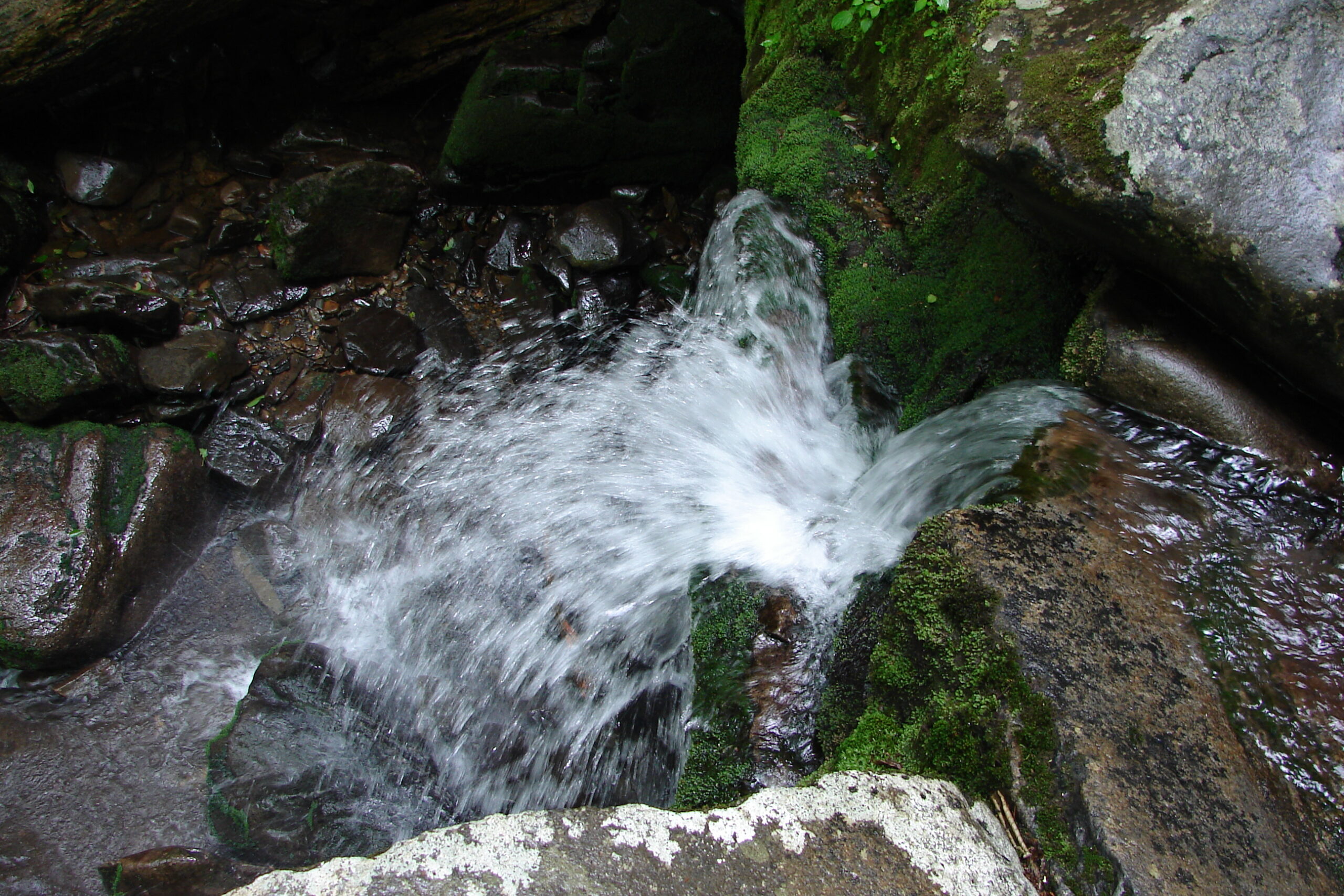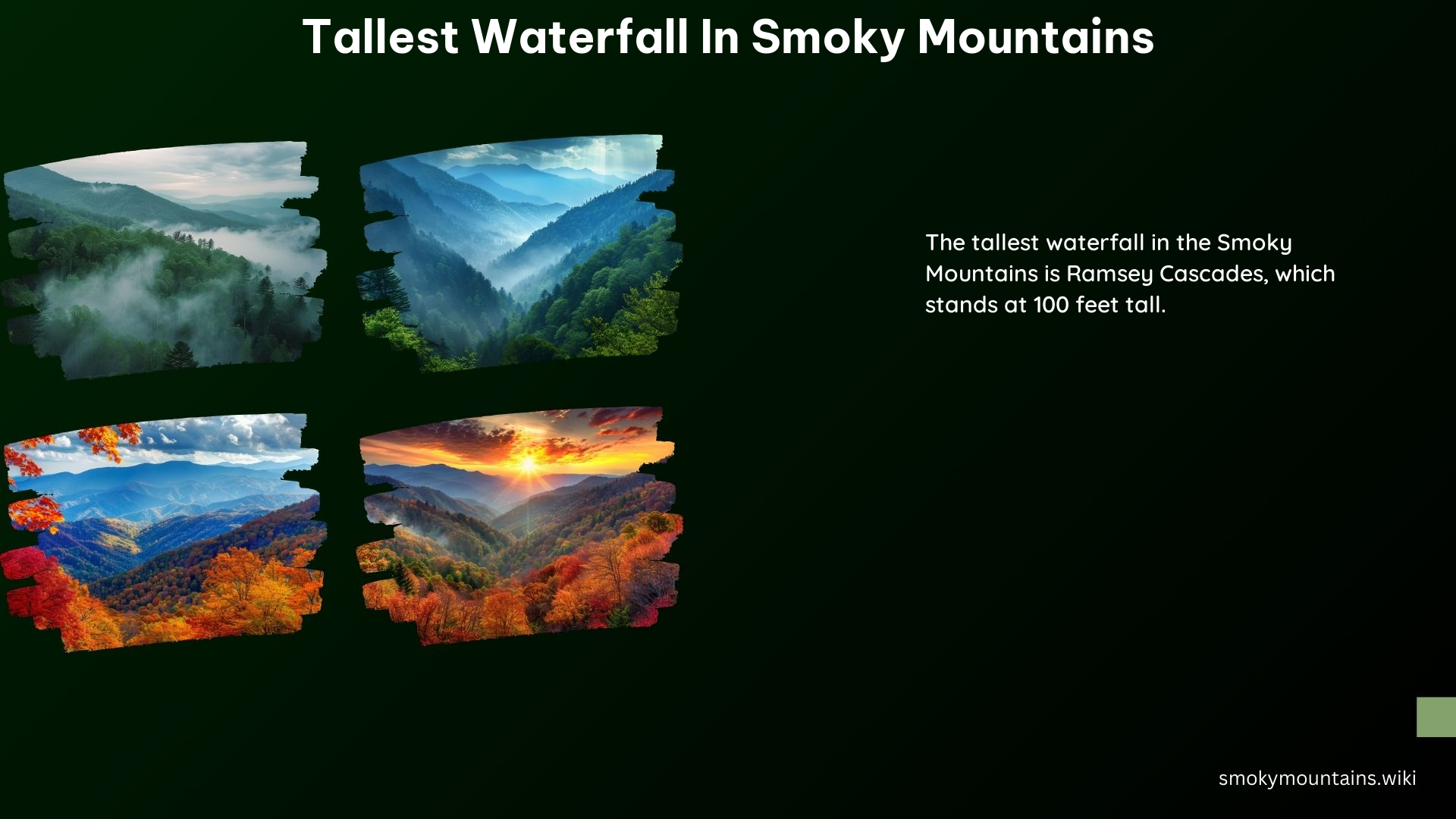The Tallest Waterfall in the Smoky Mountains is the magnificent Ramsey Cascades, standing tall at an impressive height of 100 feet. Located within the Great Smoky Mountains National Park, this breathtaking natural wonder is a must-visit destination for outdoor enthusiasts and nature lovers alike. Prepare to be awestruck as you witness the powerful cascade of water tumbling down the rugged, moss-covered rocks, surrounded by the lush, verdant forest that characterizes the Smoky Mountains.
Exploring the Ramsey Cascades Trail

To reach the Tallest Waterfall in the Smoky Mountains, you’ll need to embark on the challenging Ramsey Cascades Trail, a strenuous 8-mile round-trip hike that takes you through an old-growth forest. The trail is known for its steep inclines, rocky terrain, and numerous stream crossings, making it a true test of endurance for hikers.
Trailhead and Parking
The Ramsey Cascades Trail begins at the Ramsey Cascades Trailhead, located off of Greenbrier Road in the Great Smoky Mountains National Park. The trailhead is well-marked, and there is a small parking area available for visitors. It’s important to arrive early, as the parking lot can fill up quickly, especially during peak seasons.
Trail Difficulty and Elevation Gain
The Ramsey Cascades Trail is considered a difficult hike, with an elevation gain of approximately 2,300 feet. The trail is steep and strenuous, with numerous switchbacks and rocky sections that can be challenging for some hikers. It’s important to be prepared with proper hiking gear, plenty of water, and a good level of physical fitness.
Hiking Time and Distance
The round-trip hike to the Tallest Waterfall in the Smoky Mountains and back is approximately 8 miles. Depending on your pace and fitness level, the hike can take anywhere from 4 to 6 hours to complete. It’s important to factor in enough time to fully enjoy the waterfall and the surrounding scenery.
The Tallest Waterfall in the Smoky Mountains: Ramsey Cascades

As you approach the Tallest Waterfall in the Smoky Mountains, the sound of the rushing water will grow louder, and the air will become cooler and more refreshing. The Ramsey Cascades are a true natural wonder, with the water cascading down the 100-foot drop in a powerful, thunderous display.
Unique Features of Ramsey Cascades
The Ramsey Cascades are unique in several ways:
- Height: At 100 feet, Ramsey Cascades is the tallest waterfall in the Great Smoky Mountains National Park, making it a true highlight for visitors.
- Old-Growth Forest: The trail to the waterfall passes through an old-growth forest, with towering trees and a diverse array of plant and animal life.
- Geological Formation: The waterfall is formed by the Ramsey Prong, a tributary of the Greenbrier River, which has carved its way through the rugged, ancient rock formations of the Smoky Mountains.
Viewing the Tallest Waterfall
Once you reach the Ramsey Cascades, you’ll be able to view the waterfall from several vantage points. There is a viewing platform located near the base of the waterfall, providing an up-close and personal experience with this natural wonder. Additionally, you can explore the surrounding area and find other spots to take in the breathtaking views.
Seasonal Variations
The Tallest Waterfall in the Smoky Mountains is a year-round attraction, but the appearance and flow of the waterfall can vary depending on the season. During the spring and early summer, the waterfall is typically at its most powerful, with snowmelt and heavy rainfall contributing to a robust and thunderous display. In the drier summer months, the waterfall may slow to a trickle, while in the fall, the changing foliage can create a stunning backdrop for the cascading water.
Wildlife and Ecology of the Ramsey Cascades Area
The Ramsey Cascades Trail and the surrounding area are home to a diverse array of plant and animal life, making it a fascinating destination for nature enthusiasts and wildlife lovers.
Flora and Fauna
Along the trail, you may spot a variety of wildflowers, including trilliums, lady’s slippers, and mountain laurel. The old-growth forest is also home to a range of tree species, such as tulip poplars, hemlocks, and oaks. As for wildlife, the area is known to be a habitat for black bears, white-tailed deer, raccoons, and a variety of bird species, including the iconic Smoky Mountain salamander.
Ecological Significance
The Ramsey Cascades and the surrounding forest are part of the Great Smoky Mountains National Park, which is recognized as a UNESCO World Heritage Site and an International Biosphere Reserve. This designation highlights the ecological significance of the region, which is home to an incredibly diverse array of plant and animal life, many of which are found nowhere else on Earth.
Tips for Visiting the Tallest Waterfall in the Smoky Mountains
To make the most of your visit to the Tallest Waterfall in the Smoky Mountains, here are some helpful tips:
- Prepare for the Hike: Wear sturdy hiking boots, bring plenty of water and snacks, and be prepared for the strenuous nature of the Ramsey Cascades Trail.
- Arrive Early: The parking lot can fill up quickly, so it’s best to arrive early in the day to secure a spot and avoid crowds.
- Respect the Environment: Stay on the designated trails, do not disturb the wildlife, and pack out all of your trash to help preserve the natural beauty of the area.
- Check Weather Conditions: The trail can be slippery and dangerous in wet or icy conditions, so be sure to check the weather forecast before your hike.
- Bring a Camera: The Tallest Waterfall in the Smoky Mountains is a photographer’s dream, so be sure to bring your camera to capture the stunning scenery.
Conclusion
The Tallest Waterfall in the Smoky Mountains, the magnificent Ramsey Cascades, is a true natural wonder that should be on the bucket list of every outdoor enthusiast and nature lover. Whether you’re seeking a challenging hike, a breathtaking natural spectacle, or a chance to immerse yourself in the rich ecology of the Great Smoky Mountains, the Ramsey Cascades is a destination that is sure to leave a lasting impression.
